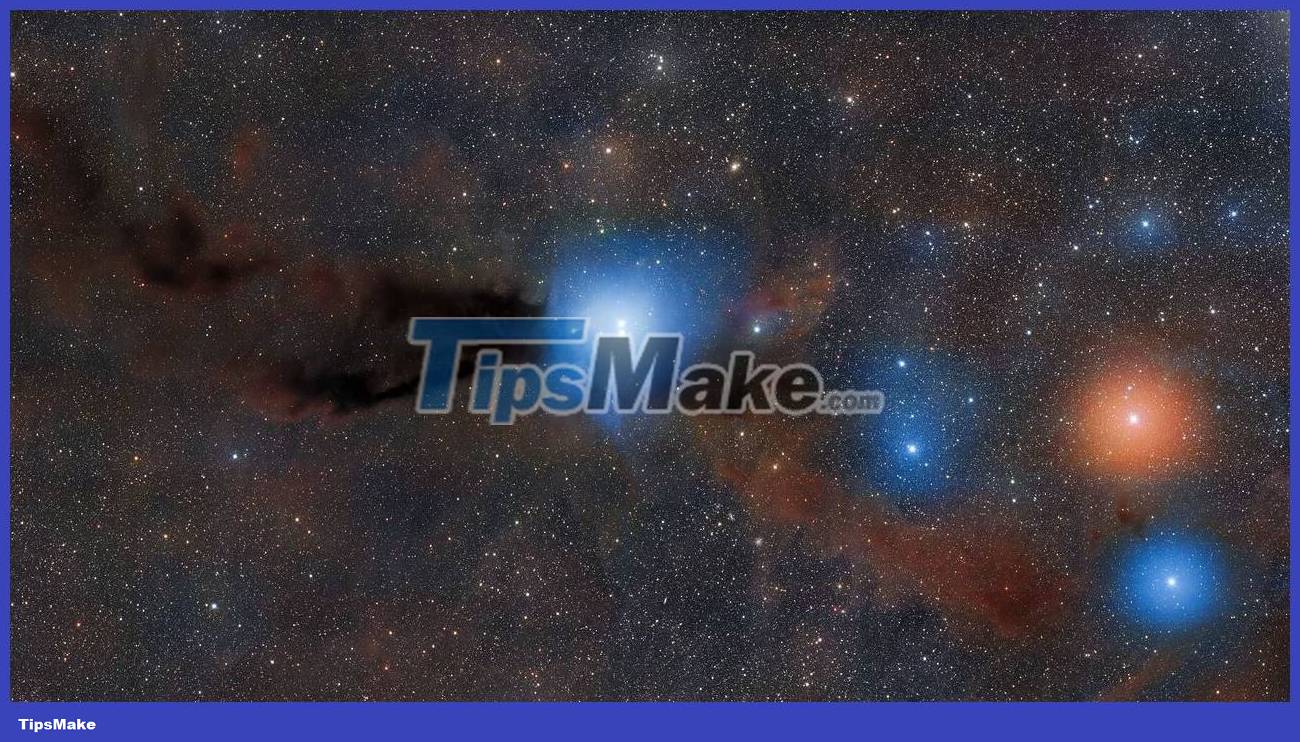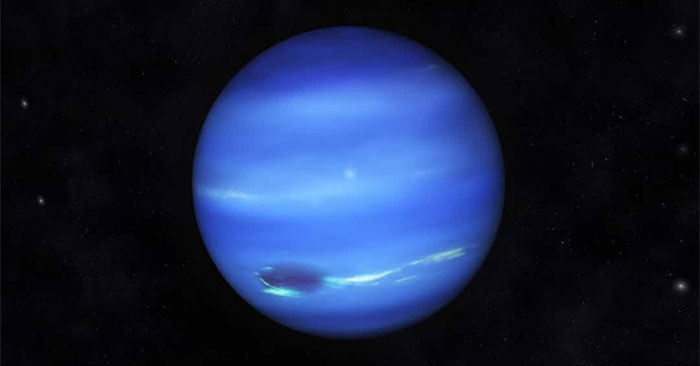Admire the moment millions of new stars are born in the Lupus 3 nebula
International scientists have released a stunning new image showing star formation inside a nebula located 500 light-years from Earth.
Taken with the Dark Energy Camera system, the image shows both the dark cloud of Lupus 3 and the bright young stars of the Bernes 149 nebula appearing extremely clear. The dark cloud here is in fact an extremely important and necessary ingredient for star formation. Put simply, it is the collection of gas and dust that provides the 'fuel' for newly born stars. Lupus 3 is known as a dark nebula because of its dense density, which can obscure the light of the stars behind, giving the impression of a 'black silk' band spreading across the starry sky.
In addition to Lupus, there is another nebula shown in the image, which is Bernes 149. This type of nebula is called a reflection nebula, which is also essentially a cloud of dust and gas, but lighter than a dark nebula. Instead of blocking light from stars, this type of nebula can reflect light, making the cloud appear as luminous as usual. Unlike emission nebulae, in which gas actually glows due to ionization, reflection nebulae do not produce light on their own but still reflect enough light for humans to see.
 Admire the moment millions of new stars are born in the Lupus 3 nebula Picture 1
Admire the moment millions of new stars are born in the Lupus 3 nebula Picture 1
In the nebula, you can see bright spots that are young stars. Right in the center of the image are two close stars, named HR 5999 and HR 6000, which are blue because they're so small. They are only 1 million years old and are not old enough or old enough for nuclear fusion to occur in their cores. That means they are not main-sequence stars yet, but are instead stars in the luminous region, as the strong gravity compresses the matter inside, causing it to heat up.
When stars are born and young, they create powerful stellar winds that blow away dust and gas around them. This would prevent more stars from being born nearby, creating an equilibrium to keep the number of new stars born at a reasonable level. Studying star-forming sites like these nebulae can help astronomers learn more about the formation process and early stages of a star's life.
You should read it
- Admire the giant stars forming in the corner of the Tarantula Nebula
- Which star lives the longest, brightest, biggest, ... in the universe?
- Unique giant eye named Helix in space
- Vsmart Star 3: Snapdragon 215, dual camera, 3500mAh battery, priced at 1.79 million
- Close up of the star is said to be a giant structure of aliens
- Admire the magical beauty of the Rho Ophiuchi star system through the eyes of the James Webb . telescope
- Honkai Star Rail: How to build March 7
- Star Wars Eclipse release date has been pushed back to 2027
- This star 'tears up' its companion to create a rare beautiful nebula
- How to insert Star Wars effect in Messenger
- Honkai Star Rail: Gives you some beginner tips
- How to Be a Star
May be interested

Hubble begins its hunt for hard-to-identify medium-sized black holes

First time livestream from Mars, at 23:00 today

James Webb super telescope begins to investigate the mystery of Earth's water source

Giant water columns discovered on Saturn's moon Enceladus

The planet has the fastest wind in the solar system, reaching a speed of 2,400 km/h

Admire the image of the strange jellyfish galaxy through the eyes of the Hubble telescope






 Admire the giant stars forming in the corner of the Tarantula Nebula
Admire the giant stars forming in the corner of the Tarantula Nebula Spectacular views on Google Sky
Spectacular views on Google Sky Admire the rare moment Venus and Jupiter 'meet' each other in the sky
Admire the rare moment Venus and Jupiter 'meet' each other in the sky Admire incredibly detailed images of the Orion Nebula through the eyes of the James Webb telescope
Admire incredibly detailed images of the Orion Nebula through the eyes of the James Webb telescope The Tarantula Nebula appears beautifully through the eyes of the Hubble telescope
The Tarantula Nebula appears beautifully through the eyes of the Hubble telescope The Hubble Telescope finds a galaxy glowing strangely from behind a dark nebula
The Hubble Telescope finds a galaxy glowing strangely from behind a dark nebula